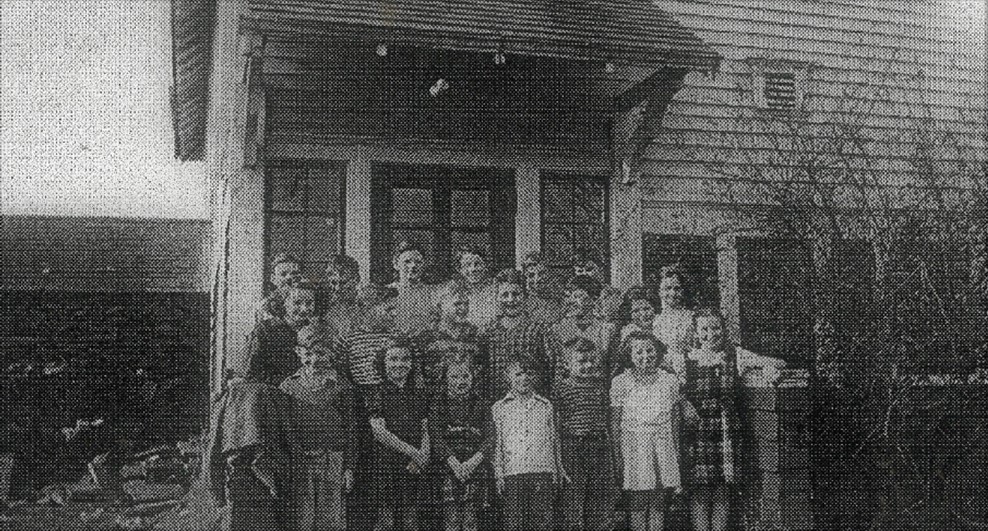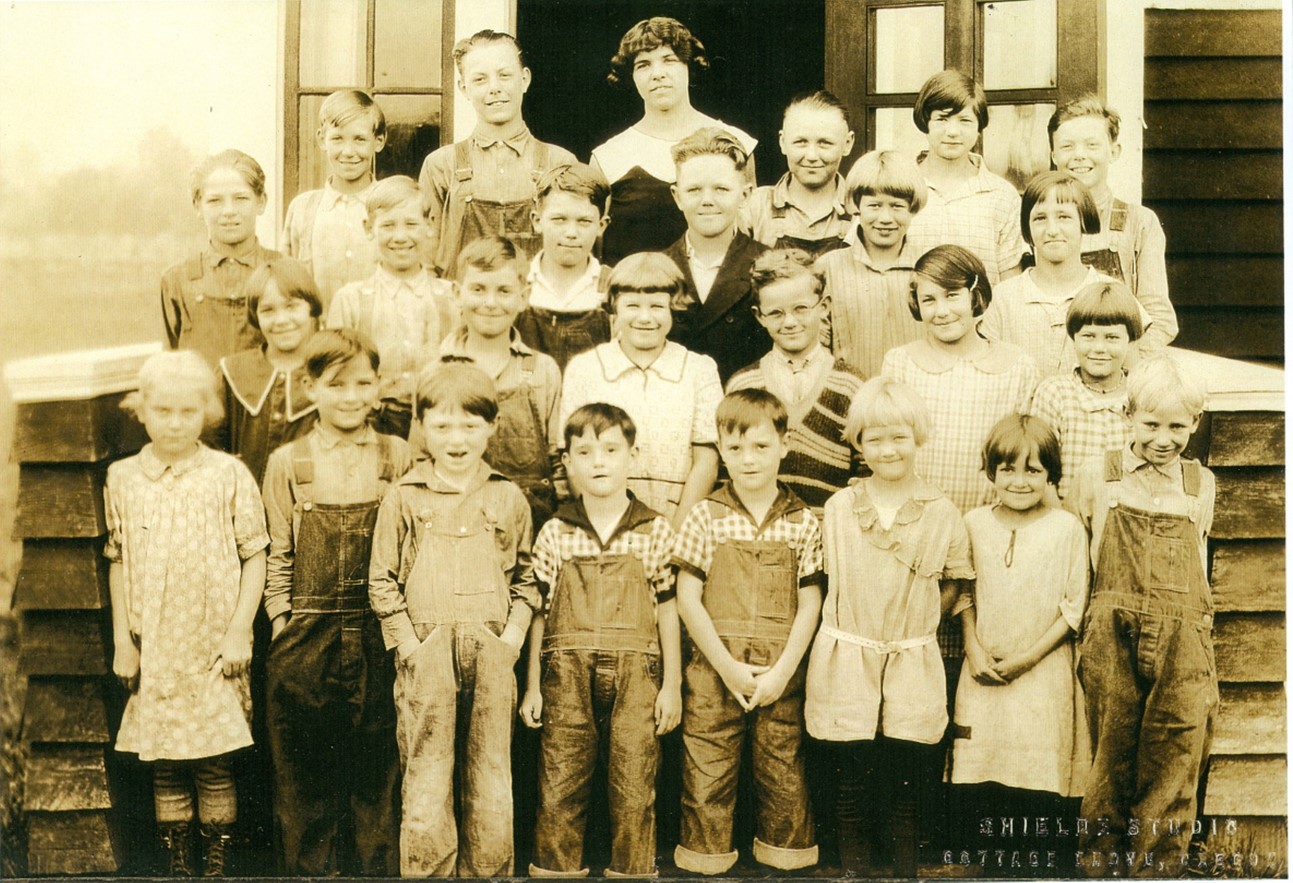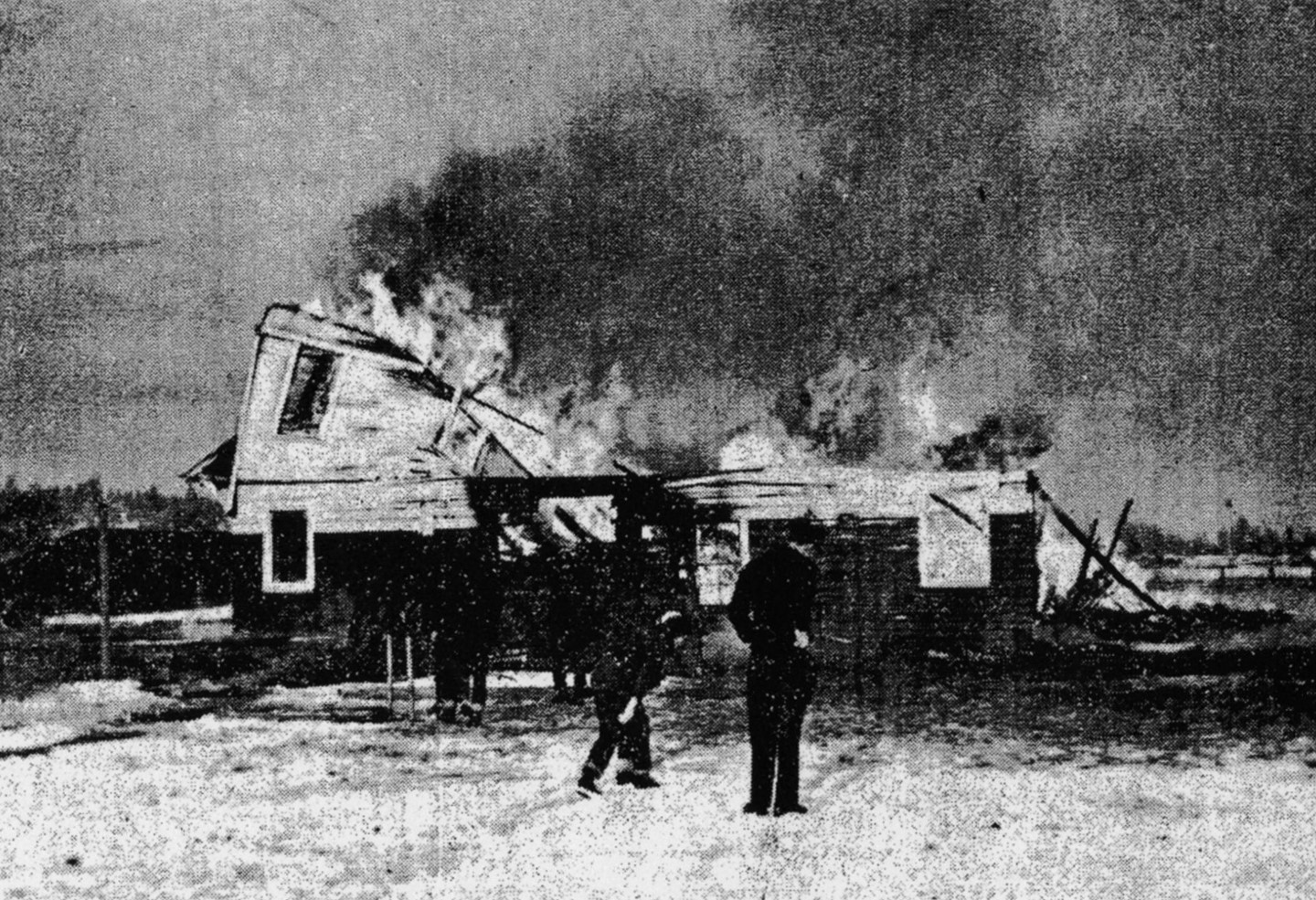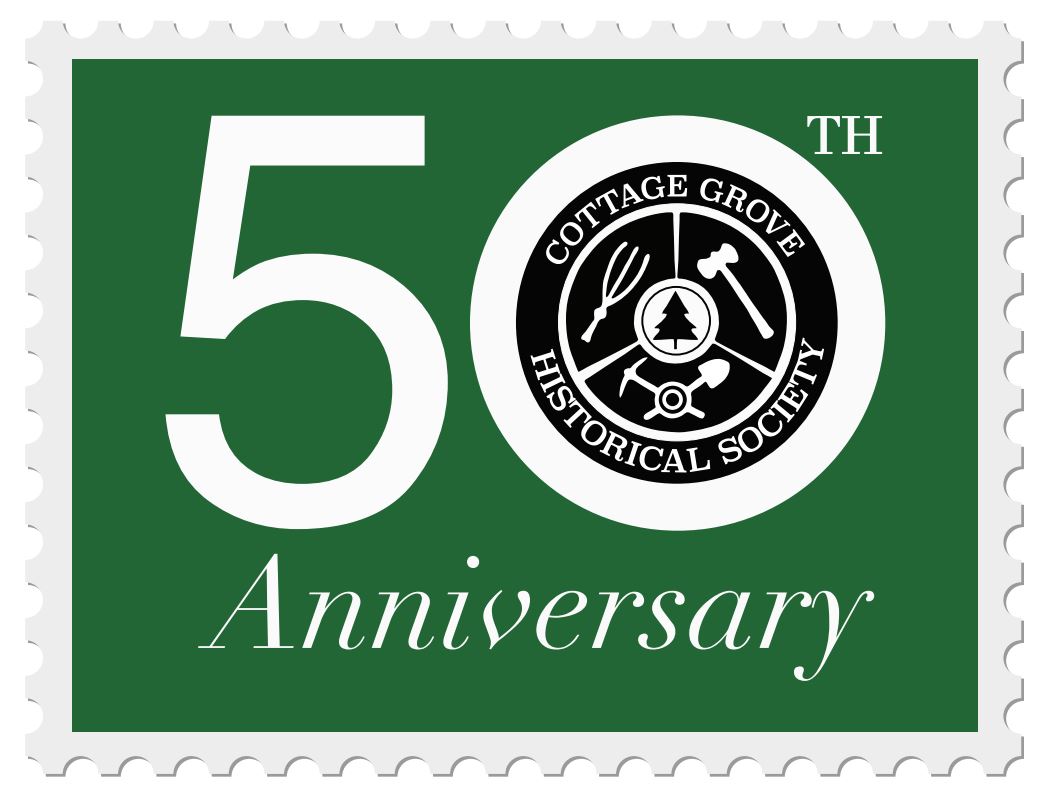
The earliest schoolhouse in Delight Valley was opened in 1919. Prior to this, students went to classes in family rooms of a neighborhood home or to Saginaw or Walker for their formal education. But in 1918-1919 the community banded together to pay for and build a school for the local kids. This school was not fancy but it was well appointed.
A wooden two-story structure with classrooms on the second floor, an auditorium, utility, storage and restrooms on the first. One student, who attended school there in the 1930’s, would later recall that while the restrooms were built, they were never hooked up, so students still had to use an outhouse by the fence. The same student said when he attended school there the furnace room existed but not utilized, instead the classrooms upstairs were heated with wood burning cast-iron stoves. One would expect that sometime in the 1940’s the restrooms and furnace systems were completed and utilized, but available resources could not be found to confirm these assumptions.
This building was not quite ready for the start of the school year in 1919. The first mixed aged class of 25 students began the school year meeting at the home of the Brown family. They were able to move into the school in October with Mrs. Blanche Groom as the teacher.
Virginia Sheldon, Delight Valley class of 1939, shared memories of the school in a written letter. She recalled Mrs. Culver as her teacher. “She would bring some stew meat or soup bone and we older girls would make stew. Each student would bring a potato, onion or carrot. Sometimes the teacher would bring a kettle of beans. She did this because there were children who came to school without lunch. Times were rough for a lot of people.” While this brings up images of Stone Soup, Virginia attended school during the Great Depression, when things indeed were hard for everyone. But in this school, at least one student recalls warm memories of hot soup boiling away on the wood stove and served to the kids at lunch time.
Another account, written by Jane A. Davidson Myers, recalls the floor of the auditorium. She describes the original floor as wooden slats over a cement foundation. It wasn’t long before area flooding warped and damaged the wooden floor. Flooding occurred regularly before the dams were built in the 40’s, so it was decided that the wood floor would not be replaced. Jane also recalled stalls to the side of the building used for horses, which some kids rode to school, and for the teacher’s car. During her time at the school there were two teachers, Mrs. Culver and Mrs. Van Schoiack. Mrs. Van Schoiack would bring in new books each week that she had borrowed from the Eugene Library. On Fridays she scheduled extra reading time and taught piano lessons.
The building would proudly serve the communities children for 30 years. In December of 1949 the old two story building would step aside as a new building welcomed the young scholars. The older building hoped to serve, now as a play shed and storage location. Its life on the sidelines would prove to be bitterly brief. Shortly after returning from winter break in January of 1950 the structure would catch fire and burn to the ground. It was early on a Tuesday morning, a mere 15 minutes before the kids were scheduled to release for recess, being a cold January morning they were likely going the shelter of the play shed. Staff noticed smoke coming from the old furnace room in the play shed. Before long alarms were raised, children shuffled to safety, staff and neighbors arrived to help, fire engines were called in from the nearby communities of Cottage Grove and Lorane. Employees at the nearby Chambers Mill stopped production and ran to help. Certainty some mill workers’ children attended the school causing a bit of panic upon seeing the smoke coming from the school.
 They could not get the fire out in time to save the structure, so they switched to protecting the new school, a mere 50 feet away. It would take the hard work and diligence of fire fighters, mill workers and neighbors, some who stayed through the night to keep first the flames then the embers from reaching the new building. We can assume that some, maybe many, who stayed to keep the fire in check, were among the alumni of the old school. They stayed to protect their children’s future while watching their past crumble to the ground. What memories must have filled their heads as they sat through that long night. Images of stew boiling on the wood stove through morning sessions. Horses waiting patiently in the stalls for the end of the school day. Friday piano lessons and Mrs. Van Schoiack toting in a new pile of books from the Eugene library. Of recesses spent in the auditorium as rain fell outside. Memories of a building that was much more than simple wooden boards and cement foundation.
They could not get the fire out in time to save the structure, so they switched to protecting the new school, a mere 50 feet away. It would take the hard work and diligence of fire fighters, mill workers and neighbors, some who stayed through the night to keep first the flames then the embers from reaching the new building. We can assume that some, maybe many, who stayed to keep the fire in check, were among the alumni of the old school. They stayed to protect their children’s future while watching their past crumble to the ground. What memories must have filled their heads as they sat through that long night. Images of stew boiling on the wood stove through morning sessions. Horses waiting patiently in the stalls for the end of the school day. Friday piano lessons and Mrs. Van Schoiack toting in a new pile of books from the Eugene library. Of recesses spent in the auditorium as rain fell outside. Memories of a building that was much more than simple wooden boards and cement foundation.
